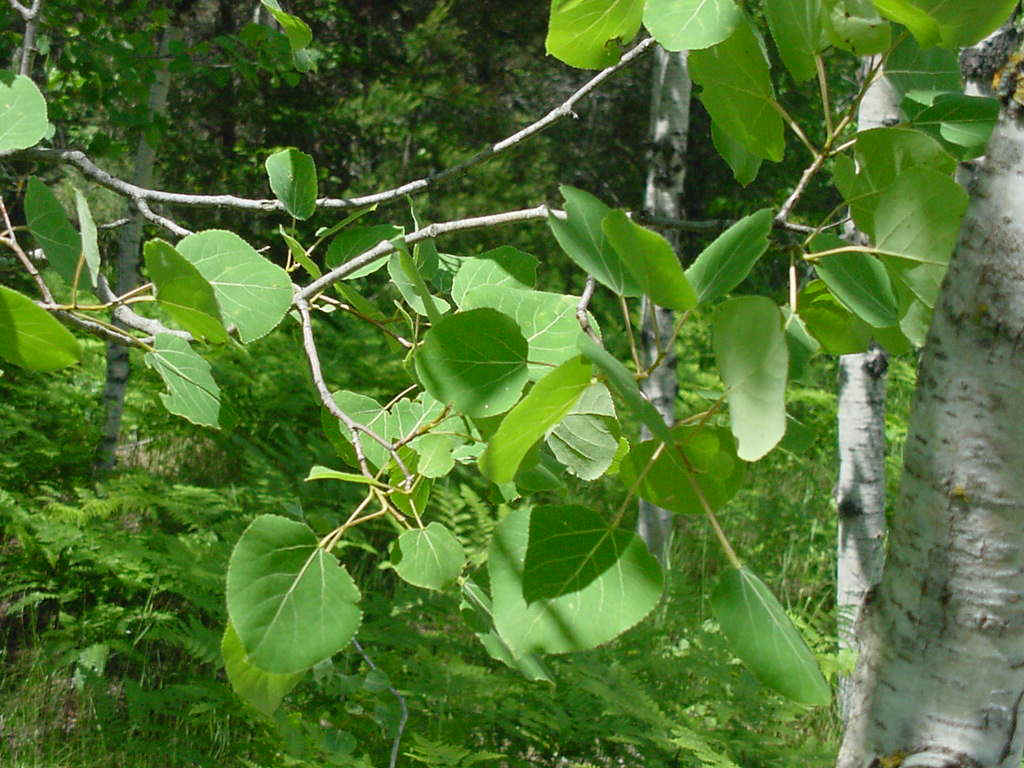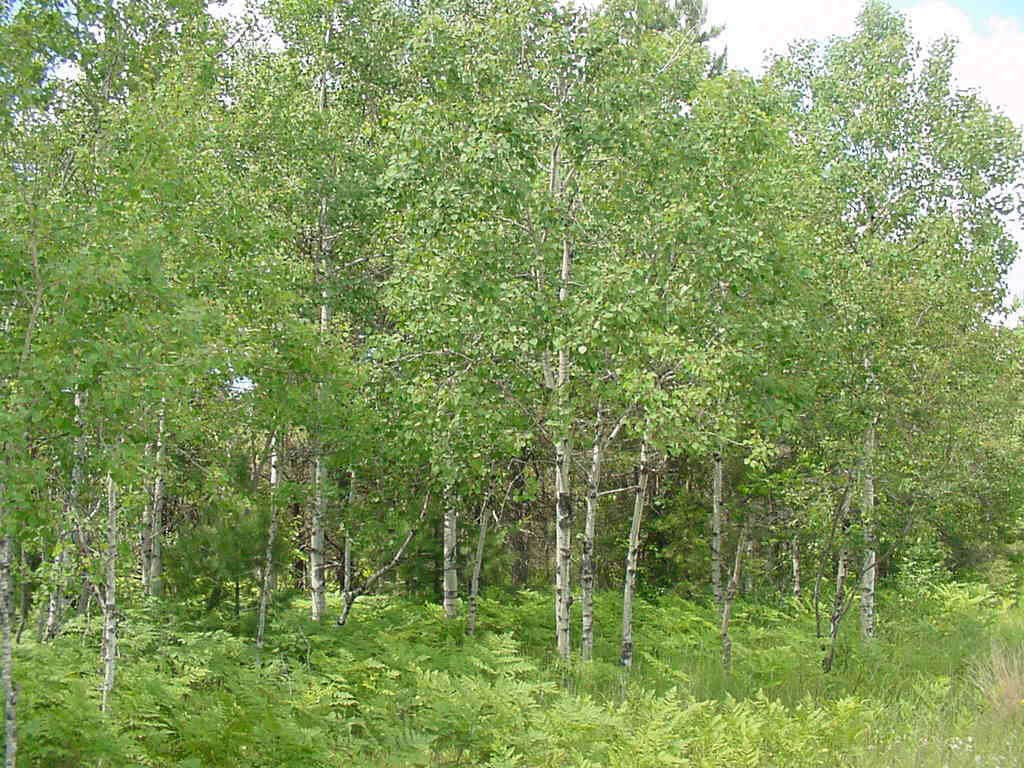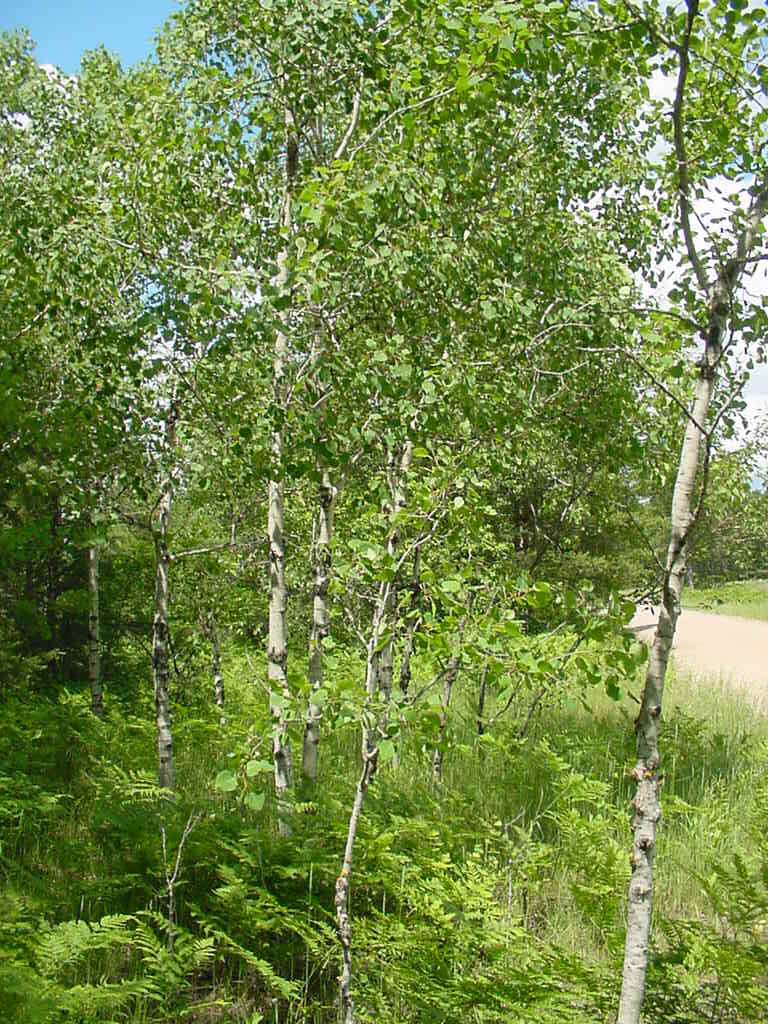Trees that come into an area after a disturbance, such as clear-cutting, a windstorm, or fire, are called "pioneer trees". They demand high light conditions, and can tolerate the extreme conditions of an open site, such as extremes of temperature and moisture, and high winds. Michigan's two main "pioneers" are aspen (leaves below) and white birch. The latter, particularly, is well-known for invading areas after a fire. many of our white birch forests date back to the fires of the 1930's.

Source: Photograph by Randy Schaetzl, Professor of Geography - Michigan State University
Both aspen and birch have short life-expectancies, and their stands are usually
"open".

Source: Photograph by Randy Schaetzl, Professor of Geography - Michigan State University
In order to maintain aspen and birch stands, clearcutting is required. These
trees come back well (and thick!) after a clear cut. If the older trees are left and
others are selectively cut, then the aspen-birch stand cannot replace itself. Such
stands commonly undergo natural succession to a forest dominated by white pine, red pine
or red maple.
Aspen clearcutting is a common forestry practice to facilitate regeneration of this
species, which is very useful in the paper industry. However, it prevents the
reestablishment of white pine and northern hardwoods forests that were lost during the
lumber baron era at the turn of the last century, according to Sierra Club. In
addition, over cutting of aspen contributes to a massive overabundance of deer habitat,
contributing to 65,000 deer/car collisions per year in Michigan alone (2001 data),
escalated threats of bovine tuberculosis exposure for livestock, and extensive damage to
rare plant species as well as agricultural crops. Thus, many environmentalists want
cleacutting of aspen stands reduced, especially on National
Forest lands.

Source: Photograph by Randy Schaetzl, Professor of Geography - Michigan State University
This material has been compiled for educational use only, and may not be reproduced without permission. One copy may be printed for personal use. Please contact Randall Schaetzl (soils@msu.edu) for more information or permissions.